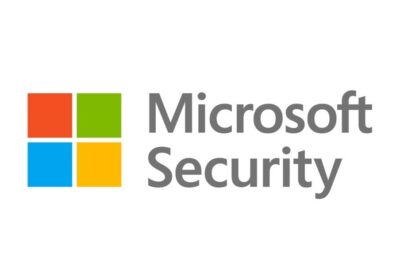What is Microsoft Exchange Server?
Microsoft Exchange Server is a comprehensive and powerful platform developed by Microsoft to manage email communication, calendaring, contact management, scheduling, and collaboration within organizations. It serves as the backbone of many businesses' communication infrastructure, facilitating seamless communication and enhancing productivity among employees.
What Does Microsoft Exchange Server Do?
Microsoft Exchange Server is a comprehensive and powerful platform developed by Microsoft to manage email communication, calendaring, contact management, scheduling, and collaboration within organizations. It serves as the backbone of many businesses' communication infrastructure, facilitating seamless communication and enhancing productivity among employees.
At its core, Microsoft Exchange Server is designed to streamline and enhance email communication within an organization. However, its capabilities extend far beyond just email management. Here's a more detailed look at what it does:
- Email Management: Microsoft Exchange Server efficiently manages email messages, allowing users to send, receive, store, and organize their emails. It provides features such as inbox folders, spam filtering, and the ability to categorize and flag emails for easy retrieval.
- Calendaring: Exchange Server offers robust calendaring features, enabling users to create and manage their schedules. Users can schedule meetings, set reminders, and share their calendars with colleagues for better coordination.
- Contact Management: It serves as a centralized repository for contact information. Users can maintain a comprehensive list of contacts, which can be accessed and shared across the organization.
- Scheduling: The platform simplifies the process of scheduling meetings and appointments. It helps users find suitable time slots, check the availability of participants, and send meeting invitations.
- Collaboration: Exchange Server integrates seamlessly with other Microsoft Office applications, fostering collaboration among users. It allows for real-time document sharing, editing, and collaboration on projects.
- High Availability: One of its standout features is high availability. It ensures that email services remain accessible even in the event of server failures or data center outages. This is crucial for businesses that rely heavily on email communication.
How Does Microsoft Exchange Server Work?
Microsoft Exchange Server operates by centralizing user account configurations and email data. Organizations have two primary deployment options:
- On-Premises Exchange Server: In this scenario, an organization manages and maintains its Exchange Server infrastructure within its own data centers. This option provides full control over server configurations, upgrades, and data security.
- Microsoft 365 (formerly Office 365) Exchange Online: This is a cloud-based offering from Microsoft where the company manages the Exchange Server infrastructure. Organizations subscribe to Microsoft 365, and Microsoft takes care of server maintenance, updates, and security. Users can access their email and other services through the cloud.
Key components of how Microsoft Exchange Server works include:
- User Account Configuration: Exchange Server stores user account information, including email addresses, mailboxes, and access permissions.
- Email Protocols: Exchange Server uses various email protocols like Exchange ActiveSync, IMAP, and Post Office Protocol 3 (POP3) to synchronize email, calendar, and other data between the server and client devices.
- Outlook Client: While Microsoft Exchange Server handles the server-side functions, users typically access their email and other services through email clients like Microsoft Outlook. Outlook provides a user-friendly interface for managing email, calendars, and tasks.
- Outlook on the Web: In addition to desktop clients, Microsoft offers a web-based version called Outlook on the web, allowing users to access their email and collaborate from web browsers.
Is Microsoft Exchange the Same as Outlook?
It's important to clarify that Microsoft Exchange Server and Outlook are distinct but highly complementary components of an organization's email infrastructure.
- Microsoft Exchange Server is the server-side software responsible for email management, user accounts, and data storage. It operates in the background, handling the technical aspects of email communication.
- Outlook, on the other hand, is an email client developed by Microsoft. It serves as the user interface through which individuals access their email accounts hosted on Microsoft Exchange Server. Outlook provides a feature-rich environment for reading, composing, and organizing emails, as well as managing calendars, contacts, and tasks.
While Outlook is the most commonly used email client for accessing Microsoft Exchange Server, it's not the only option. There are various email clients compatible with Exchange Server, including Outlook 2019, Outlook 2016, and Outlook for Mac.
Where to Find Microsoft Exchange Details in Outlook
Users can access and manage their Microsoft Exchange account settings within the Outlook client. Here's how to locate these settings:
- Account Settings: Open Outlook, click on the File menu, and select Account Settings. This menu provides an overview of configured Outlook accounts, including those connected to Microsoft Exchange.
- Outlook on the Web: For users accessing their email through Outlook on the web, similar account settings and configurations can be found in the web interface, making it accessible from different devices and web browsers.
Microsoft Exchange Server 2019 Features
The release of Microsoft Exchange Server 2019 introduced several significant features and improvements. Let's explore some of the key enhancements:
- Enhanced Performance: Exchange Server 2019 is optimized for speed and reliability. It offers faster failover between servers, ensuring minimal disruptions in case of hardware failures or maintenance.
- Scalability: It supports up to 256 gigabytes (GB) of memory and 48 central processing unit (CPU) cores, making it suitable for large-scale deployments.
- Installation on Windows Server Core: Exchange Server 2019 can be installed on Windows Server Core, a minimalistic server installation option, reducing resource overhead and enhancing security.
- Security Enhancements: Native blocking of external access to the Exchange admin center and Exchange Management Shell enhances security by reducing potential attack vectors.
- Memory Optimization: Dynamic memory cache allocation optimizes memory usage for active databases, improving overall server performance.
- out-of-Office Options: Enhanced out-of-office settings provide users with more flexibility in managing their email responses when they are away.
- Meeting Control: Administrators can now prevent meeting attendees from forwarding meeting invitations, giving better control over meeting privacy.
- User-Friendly Features: Additional user-centric features include the ability for administrators to cancel meetings organized by users who have left the company and the ability to assign delegate permissions.
- Internationalization: Exchange Server 2019 supports email addresses that contain non-English characters, allowing for more inclusive and global communication.
It's important to note that with the release of Exchange Server 2019, unified messaging and associated functionality were removed. Unified messaging features were integrated into Microsoft 365 services.
Microsoft Exchange Server 2019 Requirements
To successfully install and operate Exchange Server 2019, organizations must meet certain system and software requirements:
- Active Directory (AD) Compatibility: Exchange 2019 can be installed in an Active Directory forest, but it cannot coexist with earlier versions of Exchange in the same AD forest. The AD forest must have a function level of Windows Server 2012 R2 or higher.
- Server Hardware: The server hosting Exchange 2019 must be equipped with a 64-bit processor. It is recommended to have between 128 GB and 256 GB of RAM for optimal performance.
- Disk Partition: New Technology File System (NTFS) is required on disk partitions containing the System partition, Exchange binaries, diagnostic logs, and transport database
Files. Resilient File System (ReFS) can be used on partitions containing mailbox databases and transaction logs.
- Operating System: Exchange 2019 should be installed on a server running a compatible version of Windows Server, such as Windows Server 2019.
These requirements ensure a stable and efficient installation of Exchange Server 2019, supporting the demands of modern email communication and collaboration.
Microsoft Exchange Online
In addition to on-premises Exchange Server, Microsoft offers Exchange Online as a cloud-based alternative. Exchange Online is part of the broader Microsoft 365 suite, and it provides businesses with the same email and collaboration capabilities without the need to manage on-premises hardware.
Key Features of Microsoft Exchange Online:
- Cloud-Based: Exchange Online operates in the cloud, eliminating the need for organizations to maintain their own Exchange Server infrastructure. Microsoft handles server maintenance, updates, and security.
- Accessibility: Users can access their email, calendars, and other services through email clients like Outlook or via the web-based interface known as Outlook on the web. This accessibility allows for seamless communication and collaboration from anywhere.
- Administrative Control: Administrators with Microsoft 365 administrative permissions can easily configure and manage Exchange Online services, including user accounts, security settings, and compliance features.
- Service-Level Agreements (SLAs): Microsoft provides 99.9% uptime SLAs for Exchange Online, ensuring reliable and continuous access to email services.
- Integration: Exchange Online seamlessly integrates with other Microsoft 365 applications, fostering collaboration and productivity. Users can share documents, collaborate on projects, and communicate effectively within the Microsoft 365 ecosystem.




